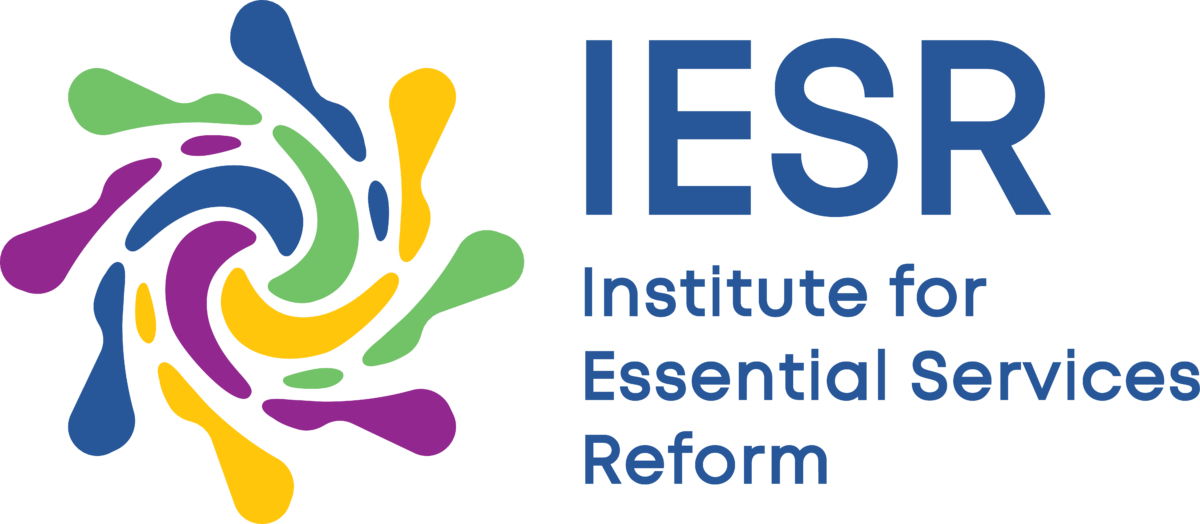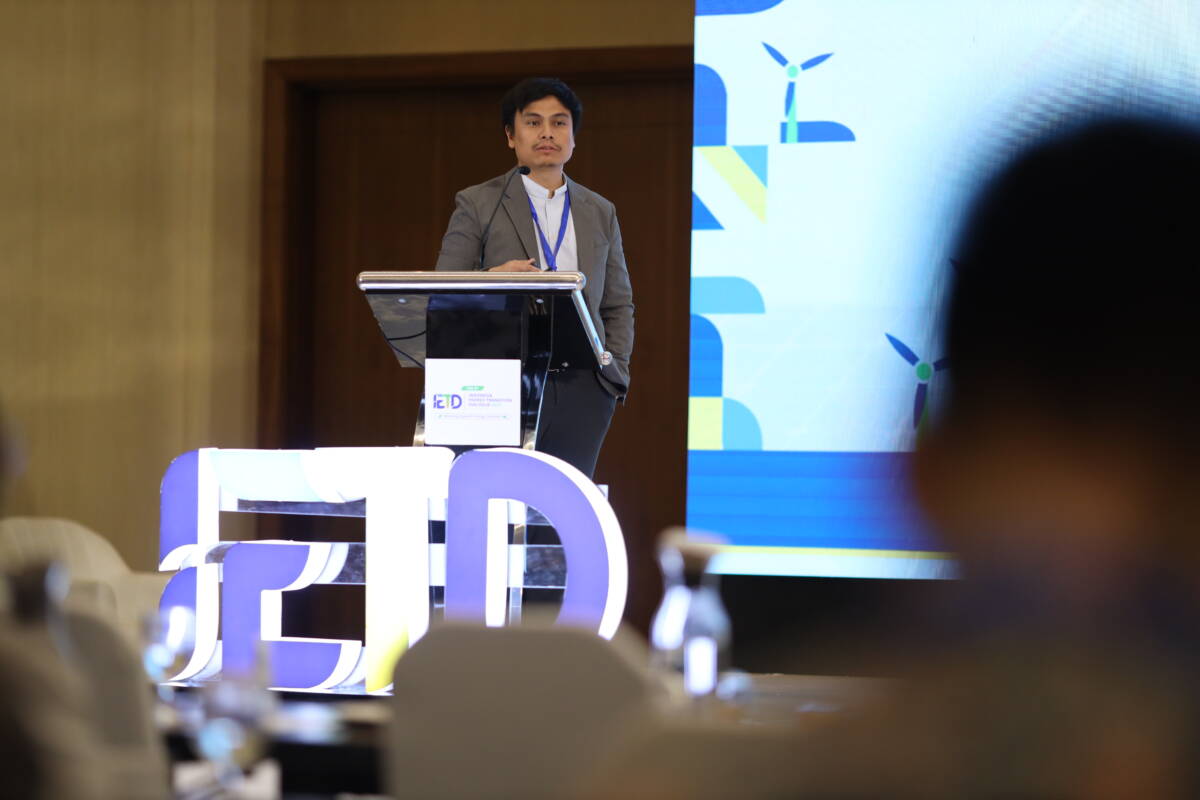Jakarta, October 7, 2025 – The Government of Indonesia has set a total renewable energy capacity addition target in the National Electricity General Plan (RUKN) 2025-2060 of 269 GW, or an addition of approximately 10.1 GW per year for the next 35 years. To support the RUKN, PLN (State Electricity Company) issued the Electricity Supply Business Plan (RUPTL) 2025-2034 with a target of adding up to 42.1 GW of capacity from renewable energy by 2034. However, as of August 2025, the capacity of renewable energy plants is still only about 15.2 GW, which is less than one percent of the technical potential of renewable energy, which stands at 3.66 TW.
The Institute for Essential Services Reform (IESR) and the Indonesia Clean Energy Forum (ICEF), supported by the British Embassy in Jakarta through the Green Energy Transition Indonesia (GETI) project, held the Indonesia Energy Transition Dialogue (IETD) 2025 on Tuesday (7/10). The topic was to dissect the barriers to find opportunities and provide recommendations for accelerating the pace of the energy transition in Indonesia.
One of PLN’s renewable energy procurement processes is carried out through the Independent Power Producer (IPP) scheme. However, the adoption of renewable energy remains slow because the procurement process is less transparent and lacks a structured timeline.
Dwi Cahya Agung Saputra, Coordinator of IESR’s Electricity System Transition, stated that in the planning stage, renewable energy must consider the power system’s capacity to absorb the energy supply from renewable power plants and its effect on the System Average Cost of Electricity Generation (BPP). Several fossil fuel power plant projects that are still under construction are being continued in the latest RUPTL, which adds to PLN’s considerations. Furthermore, the Domestic Market Obligation (DMO) policy for coal makes electricity costs from coal seem cheaper compared to renewable energy. Consequently, PLN still compares the renewable energy tariff with the subsidized cost of electricity from coal-fired power plants (PLTU), making renewable energy tariffs less attractive for private investment.
In the pre-tender and tender stages, developers wishing to participate must be included in the Selected Provider List (DPT). However, to support healthy competition in renewable energy procurement, the process for entering the DPT needs to be made clearer and more transparent to encourage more developers to participate. Additionally, developers must bear risks from the start of the procurement process, as they cover the costs of feasibility studies.
“Indonesia does not yet have a multi-year procurement calendar for renewable energy projects. This makes it difficult for developers and the market to prepare,” explained Dwi Cahya.
In the post-tender stage, other obstacles include construction delays due to land permit issues, overlapping spatial planning, and local community resistance. To overcome these barriers in renewable energy procurement, IESR pushes for three recommendations:
Improve the planning process by increasing transparency and public participation in the preparation or revision of the RUPTL, including with IPPs and local governments.
Reform the procurement mechanism by implementing a fixed, transparent schedule for DPT updates, supervised by the Ministry of Energy and Mineral Resources (KESDM). Furthermore, develop a national tender calendar and open access for new developers and clean energy startups through the classification of participants based on assets and experience.
Strengthen PLN’s role by establishing a special entity or subsidiary to act as the offtaker and implementer of specific renewable energy procurement. PLN also needs to delegate the procurement of small projects ( <10 MW) to regional PLN units or the central government through a national feed-in tariff scheme.
IESR views that increased adoption of renewable energy, especially in Eastern Indonesia, will be able to alleviate energy poverty and provide access to clean, affordable, reliable, and safe energy services. Ultimately, this aligns with Indonesia’s efforts to fully decarbonize its energy system by 2060 or sooner.
Raditya Wiranegara, IESR Research Manager, mentioned that the Provincial Government of East Nusa Tenggara (NTT), located on Timor Island, is targeting 47 percent renewable energy by 2034. This target is listed in the draft Regional Energy General Plan (RUED). Based on IESR’s study, Timor Island has a renewable energy potential of up to 30.81 GW, with solar energy having the largest potential (20.72 GW). This potential can allow the island to meet all its energy needs from renewable energy. IESR recommends a time-based strategy to achieve this. In the short term (2025–2035), canceling PLTU and Gas-Fired Power Plant (PLTG) projects can prevent an expensive and emission-intensive transition process on Timor Island. Meanwhile, in the long term (2036–2050), the early retirement of fossil fuel plants is the lowest-cost pathway for Timor Island. The total investment needed to realize 100 percent renewable energy on Timor Island is about USD 1.54 billion over the 2026–2050 period.
“If this strategy is implemented, the cancellation of several PLTU projects can avoid USD 191 million in fossil power plant investment. Instead, approximately USD 260 million in investment is needed to build renewable energy plants,” stated Radit.
In addition to Timor Island, Sumbawa Island can also be fully powered by renewable energy. West Nusa Tenggara (NTB) Province, where Sumbawa Island is located, has also prepared a Clean Energy Roadmap with a net-zero emission target by 2050. The total renewable energy potential on Sumbawa Island is 10.21 GW, with solar energy being the largest potential (8.64 GW). IESR encourages a short-term strategy (2025-2035) by replacing planned fossil fuel-based power plant projects with renewable energy-based power plants. The long-term strategy (2036-2050) is to gradually reduce fossil fuel power plants with a fuel-switching strategy to green hydrogen and ammonia.
The Indonesia Energy Transition Dialogue (IETD) 2025 is the eighth IETD since it was first held in 2018. IETD 2025 takes place from October 6-8 with the theme “Realizing an Impactful Energy Transition.”

